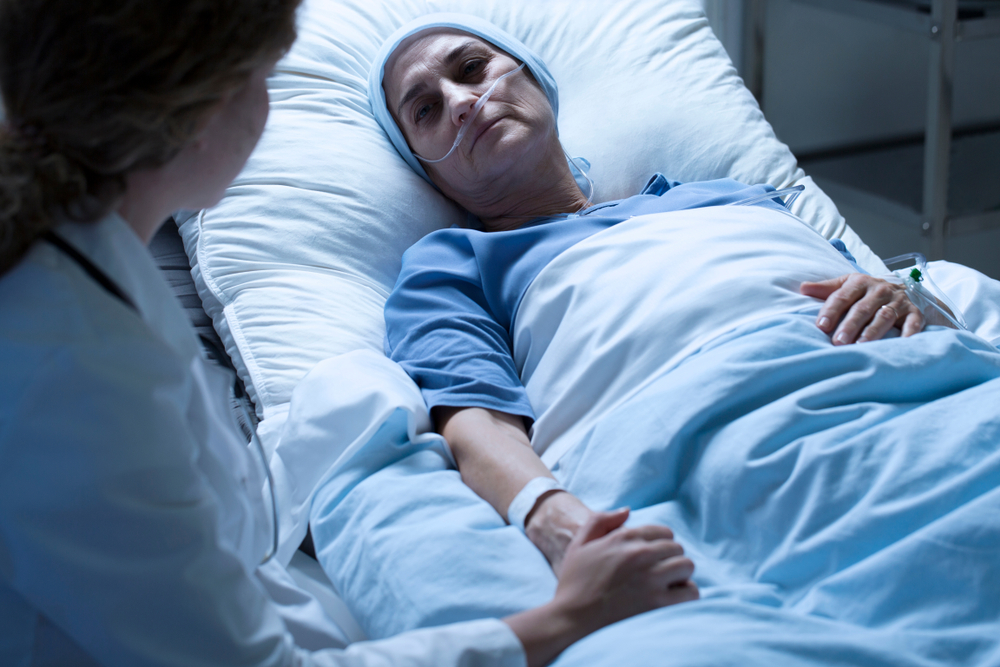While cleaning up my electronic files recently, I came across a 2005 article from the Academic Medicine journal titled “A medical experience that taught me about humanism in medicine.” The author, a physician, recounted a scene in which a 36-year-old woman, in her last hours of a not-to-be-resuscitated life, defeated by cancer, was still attached to a heart monitor. Many nurses have probably been in similar scenarios where the serenity of a dignified death is disrupted by mechanical alarms, drawing the family and the staff’s attention away from the dying person. In his essay, the physician recalled the nurse turning to him and saying, “Please turn off that monitor. All we need now are our eyes and our hearts.”
Describing the nurse, the writer observed: “When her patient struggled to breathe, the nurse increased the oxygen. When her patient cried out, the nurse increased the morphine drip. When the patient appeared to need a friend, the nurse held her hand tightly and caressed her forehead. The patient died a few hours later. Watching this nurse care for her dying patient was as powerful a display of one human being caring for another as I have ever seen.”
I was struck by these reflections because, as nurses, we typically don’t see ourselves (at least I didn’t when I was a staff nurse) as a source of inspiration to physicians. Perhaps it’s a by-product of my own implicit bias; assigning hierarchies with regard to who should inspire whom. Historically, nurses’ lament feeling under-recognized by their non-nursing colleagues, in spite of gaining the public’s highest rating in ethics among the professions for the past 20 years.
The author continued to say: “What made this nurse’s actions so special was her full engagement in the management of her patient’s death. She had a vision of how to make her patient comfortable and carried it out with great courage and compassion. She wore her heart on her sleeve and used it to guide her interventions. There were no treatment algorithms to follow nor laboratory tests to order. Her actions were visceral, instinctive… She would never receive any thanks from her patient, yet she would have something far more lasting—the inner satisfaction at having healed a soul. My mind filled with wonder as I contemplated the magnitude of this whole experience.”
My mind is filled with wonder, too. It made me realize that our physician colleagues not only see us, but they also take mental notes. In the healing osmosis of a caring environment, what we observe from one another transforms our narratives, maybe not in the here and now, but in the next patient encounter. I used to joke that if I got a dollar each time I taught a medical intern how to “do things” in my 19 years as a staff nurse at teaching hospitals, I could retire early. But then, when I think about it, I too have been blessed to witness humanism in medicine unfold while watching physicians and other healthcare workers.
I’ll drink to that
Around 6:30 am, the surgical team would descend on the ICU to round their patients. The standard recitation of medical-surgical history and overnight issues gave way to the plan for the day. I noticed that the chief surgical resident carried a bucket with single-serving apple juices. At the conclusion of the round, he would offer one to the patient while he opened one for himself; they clinked cups and drank to the health of the patient. I thought, what a marvelous idea! The patient was starting on a clear liquid diet, and the surgeon probably needed breakfast before going to the operating room. Together, they nourished a basic human need: connectedness.
In hospitals or wherever there are sick people, there is a certain dryness; beyond the sense of lack of hydration, a thirst for meaningful interaction. Water or fluids are a constant feature of nursing work—from bedbath to medications, from birthing to post-mortem care. I hope nurses will be inspired to raise a dixie cup with their patients each time they’re at the bedside—to be fully present and humane.
Reminders of humanism
In 1993, I attended a memorial service of a beloved patient who died of AIDS at the age of 35. I had a chance to care for this patient during his many admissions due to opportunistic infections. The patient’s family and friends spoke lovingly of the patient. As I exited the hospital chapel, I picked up a copy of the eulogy given by the patient’s physician and filed it somewhere. Now yellowed with time, I serendipitously rediscovered this touching tribute after 20 years. Here’s the part that moved me so: “I cannot say if David* lived indeed a short life, as it appears on the surface. But I can say that he lived a full life, dense with human relations, and that he did good, and he will be remembered, because he was sweet – not the saccharine sweetness so prevailing today, but a sweetness that nourishes. He didn’t have the fake jollity and call-me-joe mentality that seems to drown American life these days. He was genuinely there for anybody who needed him.”
Nurses and physicians devote tremendous amounts of energy saving lives. When a life is lost, they rarely get the chance to reset, to allow themselves a healing pause, before they carry on. Can you imagine if healthcare workers attended their patients’ memorial services? Would we see more humanism in healthcare? Dr. George E. Thibault, a thought leader in humanism in medicine, reminds us that to profess humanism is to renew our sense of purpose—the antidote to professional ennui and disillusionment afflicting many healthcare workers today. The proof of humanistic care is in caring. To paraphrase the British author Arthur Clarke, it’s best to remain optimistic if only to give us a shot at creating a self-fulfilling prophecy.
*Name is fictitious.


Reference
Thibault GE. Humanism in medicine: What does it mean and why is it more important than ever? Acad Med. 2019;94(8):1074-7. doi:10.1097/ACM.0000000000002796



















1 Comment. Leave new
What a great read (especially before my overnight shift begins)! We often forget about the importance of the human touch in healthcare, but the heart is equally as important as the brain when it comes to caring for patients. Thanks for the great article!